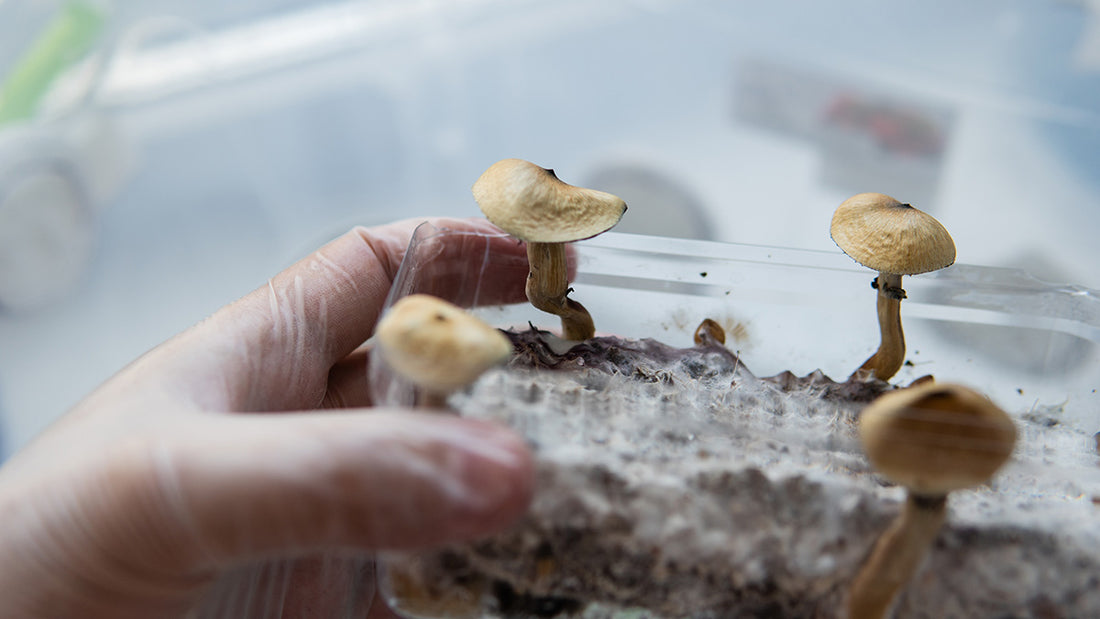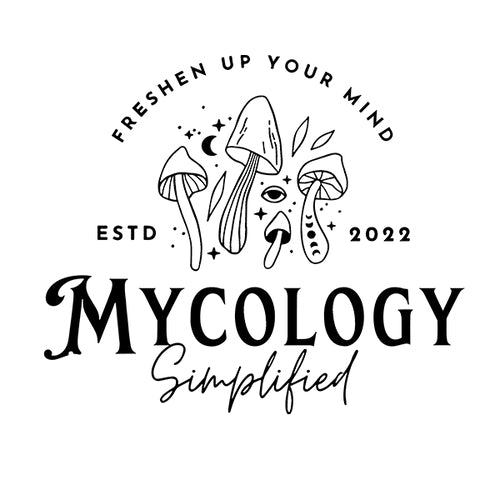
The Essential Guide to Starting Your Home Mushroom Cultivation: Must-Have Items and Equipment
Compartir
Are you fascinated by the idea of growing your own mushrooms at home? Whether you're interested in creating a sustainable food source, exploring a unique hobby, or even launching a small business venture, mushroom cultivation can be incredibly rewarding. For new cultivators, the process might seem daunting due to the specialized equipment and knowledge required. This comprehensive guide will walk you through the essential items and equipment needed to kickstart your home mushroom growing journey, ensuring you have everything you need for a successful start.
Mushroom Spawn or Spores:

The foundation of any mushroom cultivation project begins with the mushroom spawn or spores. Mushroom spawn is the vegetative part of the fungus, typically grown on grains, sawdust, or other substrates, while spores are the reproductive units similar to seeds. For beginners, starting with spawn is highly recommended as it is easier to handle and generally has a higher success rate. Spawn is more robust and less susceptible to contamination compared to spores, making it an ideal choice for those new to mushroom cultivation. You can purchase spawn from reputable suppliers, ensuring that it is fresh and suitable for the type of mushrooms you intend to grow.
Growing Medium (Substrate):
The growing medium, or substrate, is the material on which mushrooms grow. Common substrates include straw, sawdust, wood chips, and coffee grounds. The choice of substrate depends on the type of mushroom you wish to cultivate. For instance, oyster mushrooms thrive on straw and coffee grounds, while shiitake mushrooms prefer hardwood sawdust. Preparing the substrate involves breaking it down into smaller pieces and sterilizing it to eliminate any contaminants. This step is crucial as it provides a clean environment for the mushroom spawn to colonize and grow. Once prepared, the substrate serves as the nutrient-rich foundation for your mushrooms.
Containers:

Containers are used to hold the substrate and spawn during the mushroom growing process. Options include plastic bags, buckets, or trays. These containers need to be clean and have proper ventilation to prevent contamination and ensure adequate airflow. Plastic bags are a popular choice for many home growers due to their affordability and ease of use. They can be sealed and punctured to create the necessary ventilation holes. Buckets and trays are also effective, particularly for larger scale operations. Regardless of the type of container you choose, make sure it is made from food-grade materials and can be easily cleaned and sanitized.
Sterilization Equipment:
Sterilizing your substrate and equipment is crucial to avoid contamination from unwanted fungi or bacteria. The most common tools for sterilization include a pressure cooker, autoclave, or boiling water. A pressure cooker is a cost-effective and reliable option for home growers. It allows you to sterilize your substrate at high temperatures, ensuring that any harmful microorganisms are eliminated. The process typically involves placing the substrate in the pressure cooker, bringing it to a specified pressure, and maintaining that pressure for a set period of time. This step is essential for creating a sterile environment where your mushroom spawn can thrive without competition from contaminants.
Growing Environment:
Mushrooms require specific environmental conditions to grow, including the right levels of humidity, temperature, and light. Creating an optimal growing environment can be achieved using a humidity tent, grow room, or even a modified closet. The goal is to maintain a stable environment where mushrooms can flourish. Humidity levels are particularly important, as mushrooms need high humidity to fruit. A hygrometer can be used to monitor humidity levels, ensuring they stay within the desired range. Temperature control is also crucial, as different mushroom species have specific temperature requirements. Using a thermometer, you can monitor and adjust the temperature to create the ideal growing conditions for your mushrooms.
Humidity and Temperature Control:
Maintaining the right humidity and temperature is essential for mushroom growth. Tools such as a humidifier, spray bottle, and heater or air conditioner can help you achieve the desired conditions. For example, oyster mushrooms thrive at humidity levels of 85-95% and temperatures between 55-75°F (13-24°C). A humidifier can help maintain high humidity levels, while a spray bottle can be used to mist the growing area as needed. Temperature control can be achieved using a heater or air conditioner, depending on the ambient conditions in your growing space. By carefully monitoring and adjusting these factors, you can create an environment where your mushrooms will thrive.
Lighting:
While mushrooms do not need light to grow, some light exposure can stimulate fruiting. Options for lighting include LED grow lights or natural light. The key is to provide indirect light exposure, as direct sunlight can be too harsh and may dry out the substrate. LED grow lights are a popular choice for indoor growers because they are energy-efficient and can be easily adjusted to provide the right amount of light. If using natural light, placing your growing containers in a well-lit room with indirect sunlight can be effective. Light exposure can help trigger the fruiting process, leading to the formation of mushroom caps.
Harvesting Tools:

Proper harvesting tools are essential to ensure you harvest mushrooms without damaging the mycelium, the vegetative part of the fungus that remains in the substrate. Sharp knives or scissors are commonly used for harvesting. Clean tools before use to prevent contamination and ensure a clean cut. Harvesting involves cutting the mushrooms at the base of the stem, close to the substrate. This allows the mycelium to continue producing more mushrooms in subsequent flushes. By using the right tools and techniques, you can harvest your mushrooms efficiently and maintain the health of your growing substrate.
Personal Protective Equipment (PPE):

Using personal protective equipment (PPE) helps protect both you and your mushrooms from contaminants. Essential PPE includes gloves, face masks, and aprons. Always wash your hands and use PPE when handling spawn or substrate to minimize the risk of introducing contaminants. Gloves prevent direct contact with the substrate, reducing the likelihood of contamination. Face masks protect against airborne particles, while aprons keep your clothing clean. By adhering to proper hygiene practices and using PPE, you can create a sterile environment that promotes healthy mushroom growth.
Conclusion:
Starting your journey as a home mushroom cultivator is both exciting and fulfilling. With the right equipment and a bit of knowledge, you can grow a variety of mushrooms in your own home. By following this guide and ensuring you have the necessary items and equipment, you'll be well on your way to successful mushroom cultivation. Remember, the key to success lies in maintaining a clean environment, monitoring growing conditions, and being patient. With time and practice, you'll be able to enjoy the fruits of your labor and perhaps even share your homegrown mushrooms with friends and family. Happy growing!
